Our Wooden Minibeast Blocks set is new for 2019.
A robust set of 33 chunky wooden picture blocks, colour printed on both sides with real images of minibeasts from around the world.
Includes colour identification guide in 7 languages. Find out more here.
Jen, a childminder and early years blogger, has been reviewing our Minibeast Blocks.
We contacted her to find out what she thinks of the set and how she has been using it:
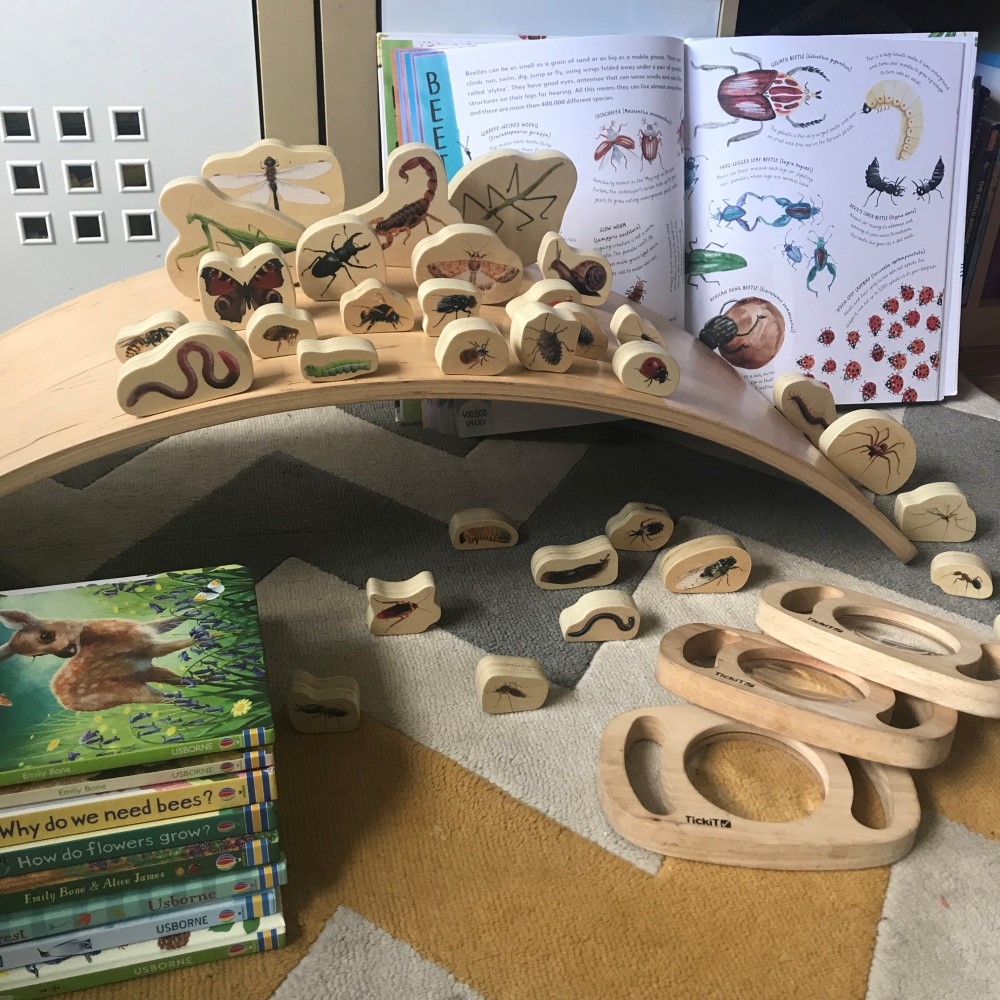
As anyone will see who follows my Instagram page @mamasden I love to use wooden toys in my childminding setting.
I follow a curious approach with my children. I encourage them to get hands on with the toys, manipulating them, combining them in different ways and being inventive with games.
Part of my approach is to use toys that encourage investigation and lead the children to question their understanding and knowledge.
When I was asked by @tickit_education to review their Wooden Minibeast Blocks I was excited to see how we would use them.
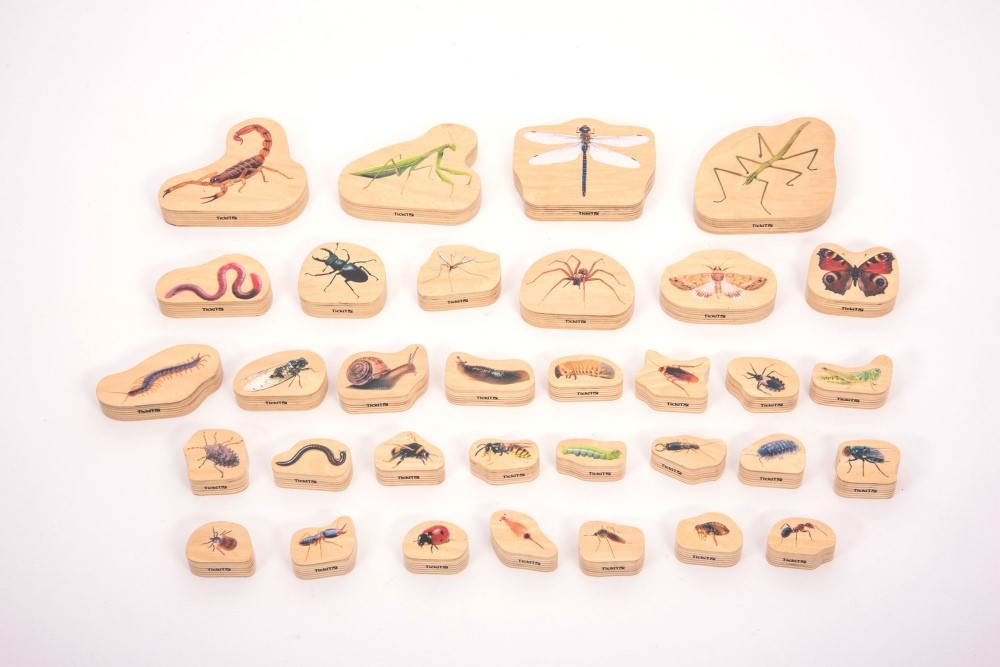
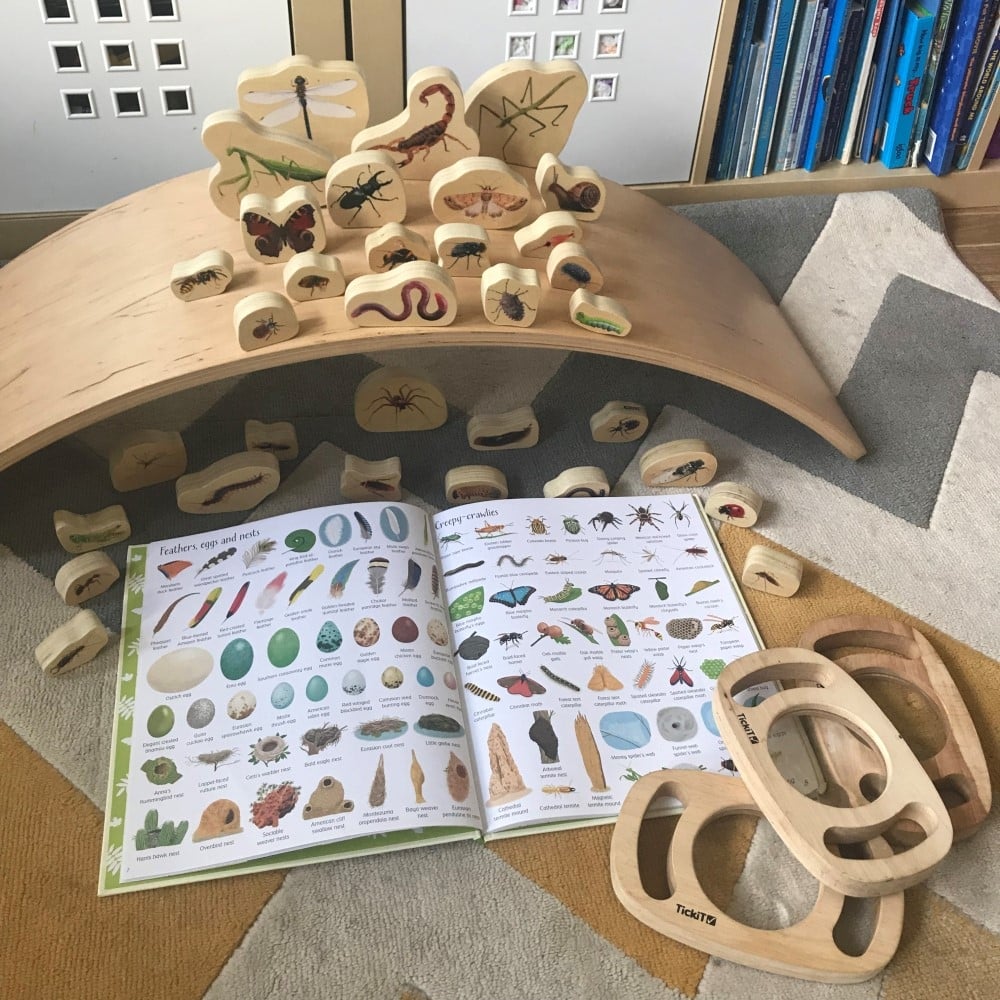
First Impression
On receiving the set, I was pleasantly surprised on the size of the pieces. The biggest 4 being adult palm size (108 x 85 x 20mm) and all being made of chunky birch plywood.
The pieces are printed with a real-life image of the minibeast on both sides meaning that a child can easily spot the block they are wanting to use in their play.
The set contains 33 pieces showing minibeasts from both home and abroad which give children the opportunity to spot familiar creepy crawlies and the information card included shows all of the bug blocks with their name (in several languages) which I found helpful as there were a couple I was unfamiliar with myself.
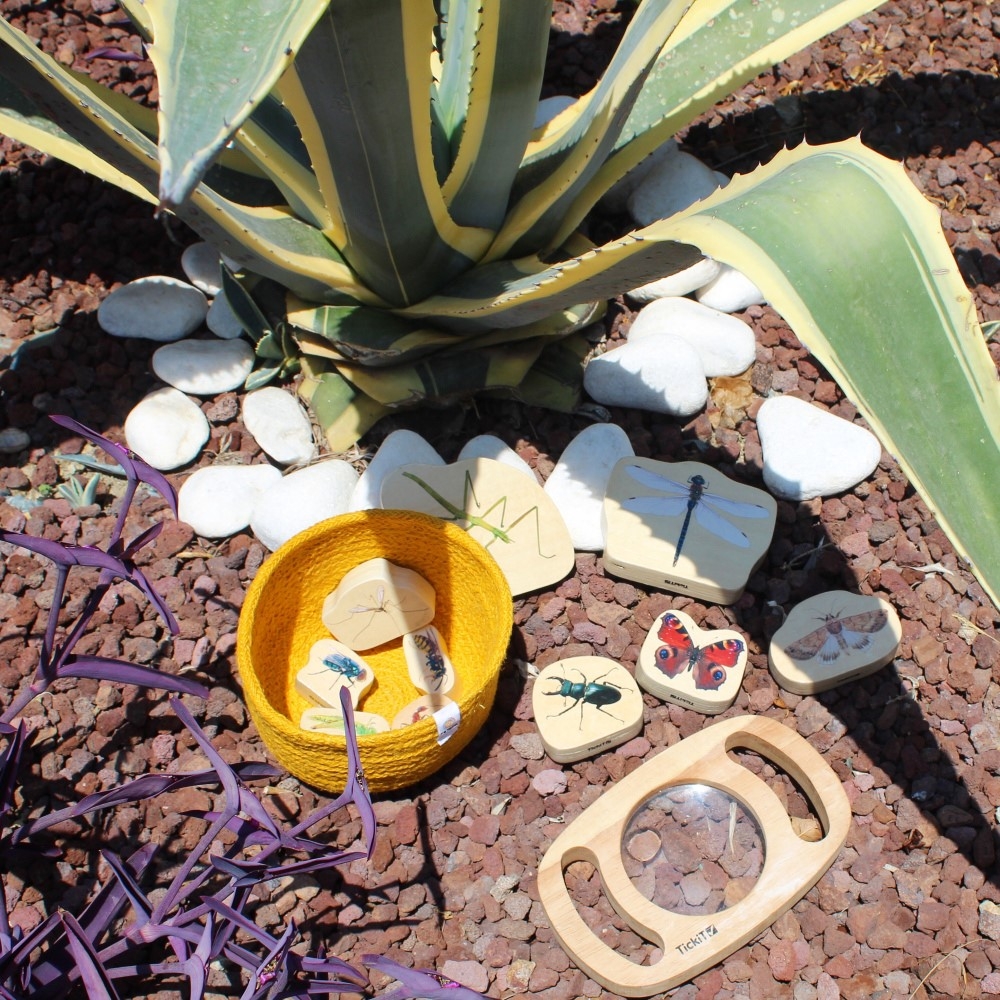
Play
We have had the blocks for just a few short weeks but have already been able to use them in a variety of ways.
They are extremely versatile and being chunky are easy to use with younger children (over 12 months) and the older children in our play.
One of our favourite games has been an identification game. We used the blocks combined with our books to discuss the names, habitat and country of origin of the minibeasts and the children picked out the blocks depicting minibeasts which they themselves had seen. I really like that the blocks can be laid flat or can free stand.
I think that these blocks could be used in multiple ways and as we are studying lifecycles over the Summer, I’m sure that many will be used to discuss metamorphosis and bug behaviour. Being a childminding setting as well these blocks are going to gain many years of use from multiple children who I’m sure are going to gain vast amounts of knowledge as they encourage curious thinking.
We have also used the blocks as prompts on bug hunts and I have even taken a small selection on holiday to look at ‘bugs abroad’.
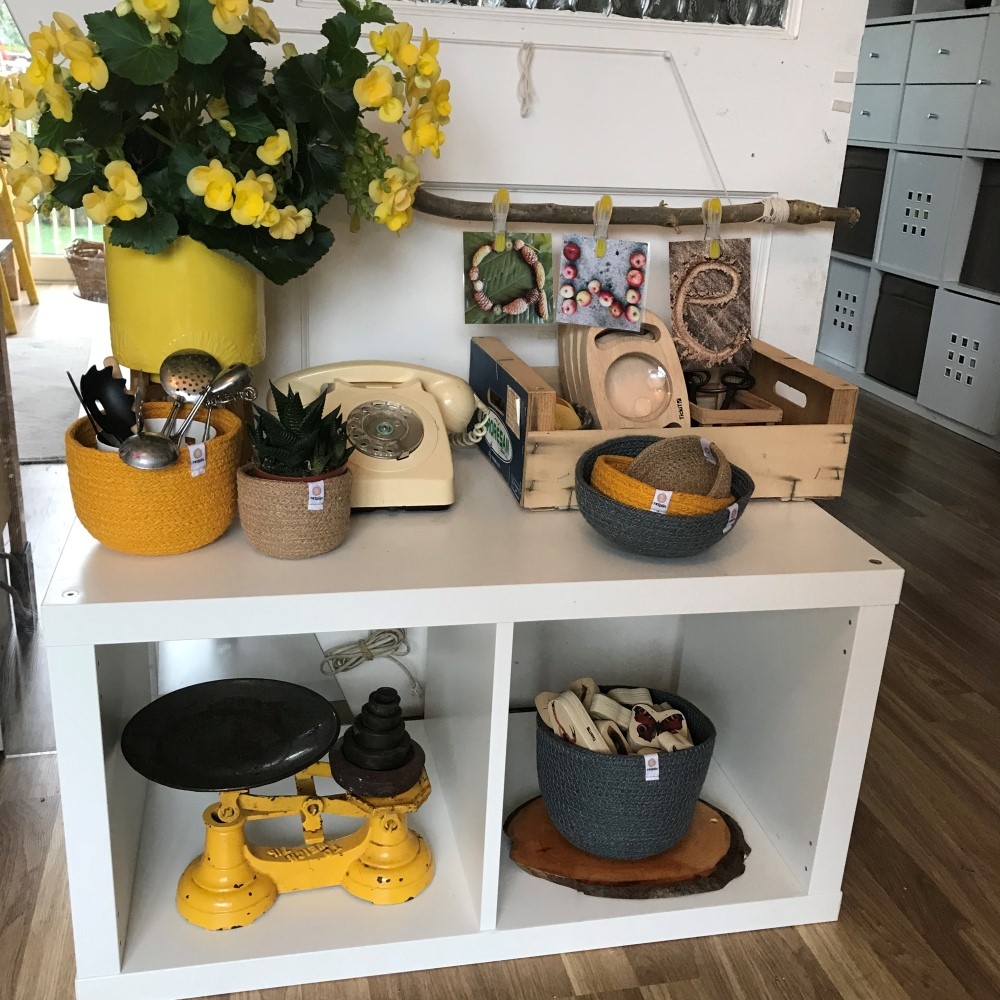
Supporting Early Years curriculum
Buying new toys as a childminder or for anyone wanting to add to a collection at home or in a nursery setting should be mindful of how they are going to use the toy. Will it have longevity? Can it be used in multiple ways? Will it be both a fun toy and have learning opportunities? Using these questions in relation to these blocks I can honestly say I think they would be a great investment.
If you are still unsure one of the ways I like to decide whether to invest in a new resource is to think about it in relation to the early years framework and figure out ways that I can combine it into the 7 areas of learning.
Here are my thoughts for this product.
• Personal and Social Development
Children can play together and discuss the minibeasts. They will be able to share their love of some bugs whilst others may be able to show their fears. Children learn from each other. Younger children may learn new words or ways to play via modelling.
• Physical Development
Fine motor skill development as children use their hands to pick up and manipulate the blocks. They could also balance blocks leading them to be able to co-ordinate their movements. Gross motor skills could be included if the blocks were used in a more active way such as a bug race.
• Communication & Language
Having realistic images on the blocks will encourage children to learn new descriptive words. They can make comparisons between the creepy crawlies, especially when combining the blocks with bugs found on nature walks or read about in books.
• Mathematics
Children can count the blocks, make comparisons between the sizes of the blocks, decide which blocks are heavier or lighter. They can look up the real properties of the minibeasts and make size and weight comparisons.
• Understanding the World
Where do the bugs live? What is their typical habitat? Are any of the minibeasts at risk of extinction? How can we encourage them to visit our garden? There are so many ways of engaging children in nature studies and these blocks can be used as useful reference material.
• Literacy
The information card included shows the bug names in several different languages. Older children could learn these words whilst younger children could just learn that a creature that looks like a fly might actually be called a bee, wasp or butterfly.
• Creative art and design
Encourage children to explore texture and colour. They can use describing words to show they can spot texture of animals and bugs… furry, smooth, spiky. They could use paint, chalk, or collage to create their own minibeast pictures.
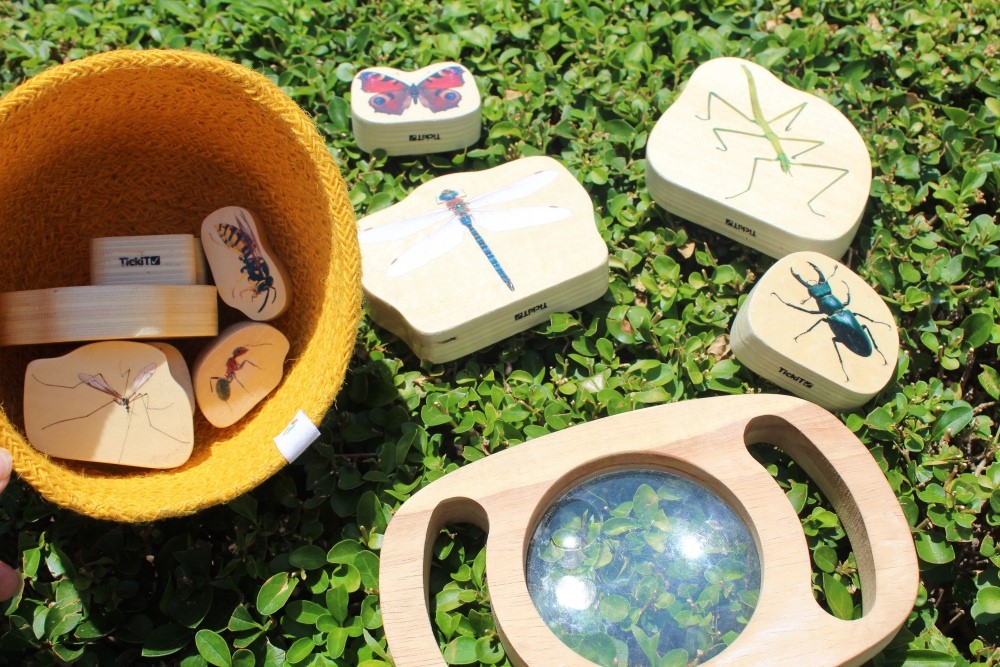
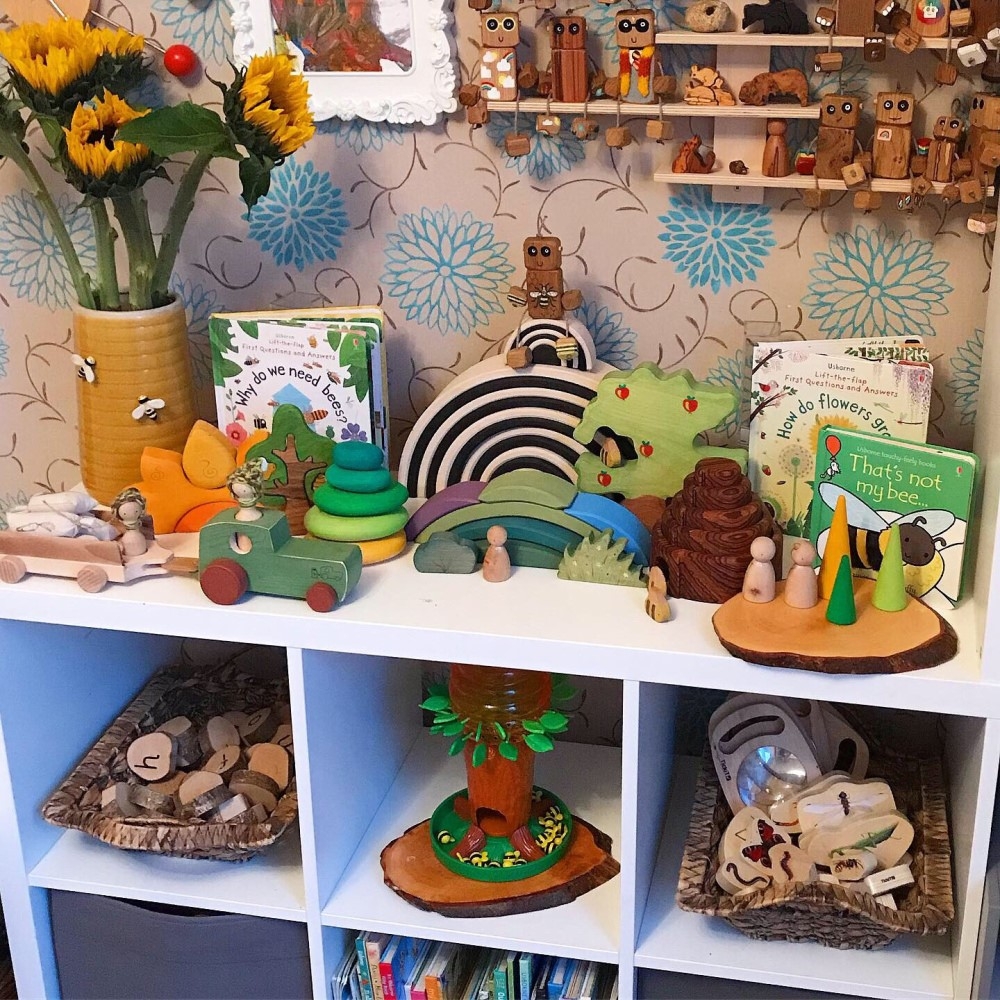
And finally
These blocks retail at £49.99 +VAT. I think for some people this might be right at the top of their budget however given the amount of ways that they can be played with I feel they are definitely worth investing in.
If you were buying for home use you could also combine into playdough activities, use in small world and even take them with you to butterfly houses if you were going on a day trip.
In my setting I have had them out on our toy shelves within easy reach of little hands and they have often been used by the children to start a conversation.
One of my minded children brought me a mantis. She asked what it was, and I told her. This then prompted us to look it up on the tablet and to also link it with other bugs native to rain forests where they are most abundant.
Thank you for reading this review and I hope it has given you some ideas of how I have used these Wooden Minibeast Blocks in my setting including ideas for future play.
Jen x
Blocks Gifted
I was not paid for this review
Follow Mama's Den on Instagram here and read her inspiring blog here.
